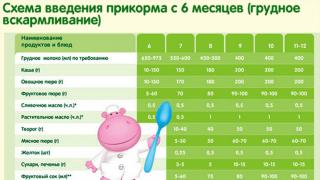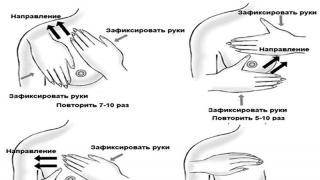Space is a relatively late invention. It was not in the Phoenician and the original Hebrew and Aramaic scripts. In Greek writing, it has only been used for a few more than a thousand years. In Latin it was sometimes found in antiquity, but in the Middle Ages it disappeared and returned also about a thousand years ago. It is also absent in the oldest Slavic monuments (both in Glagolitic and Cyrillic); regularly and in the present sense has been used in Cyrillic only since the 17th century. It was practically not used in the Arabic script until the 20th century. In modern Chinese and Japanese, the space may also be omitted.
To indicate the word section in scripts that do not have or rarely use spaces, various techniques have been and are being applied, for example:
- special letter forms for the beginning and / or end of a word;
- the use of diacritical marks placed at the first and (or) last letter of words, or the addition of special unpronounceable letters to the beginning (end) of a word;
- separation of words instead of spaces by other characters (most often a dot or colon, sometimes a vertical bar, etc.);
- continuous outline of characters included in one word, or designation of the belonging of characters to a word graphically (for example, a line).
In ancient scripts, spaces (or some other way of separation) could separate not individual words, but larger units of the text (phrases) or smaller ones (syllables). The fused and separate spelling of combinations of full-valued words with service elements (prepositions, particles, etc.) is one of the most difficult for students and an unstable part of the spelling of many languages, including Russian.
Rules for placing a space next to punctuation marks
1. In the Russian-language set there is a space put:
- after comma, period (including those denoting abbreviations and initials), semicolons, colon, question mark or exclamation mark, ellipsis (except for ellipses that begin a sentence);
- front ellipsis at the beginning of a sentence;
- from the outside brackets and quotes;
- at both sides dashes, with the exception of the dash between the numeric designations of non-negative integers (according to typographic rules, not ordinary spaces are put around the dash, but truncated (two-point) ones, but due to the limitations of computer typing, full spaces are often put: non-breaking on the left and normal on the right).
2. However, the gap not put:
- front comma, full stop, semicolon, colon, question mark and exclamation mark, ellipsis (except for the ellipsis at the beginning of a sentence);
- after ellipsis at the beginning of a sentence;
- from the inside brackets and quotes;
- at both sides hyphen (except unilateral hyphens, that is, cases like "one- and two-story") and an apostrophe.
3. In the case of simultaneous application of paragraphs 1 and 2 (for example, if the period is before the closing parenthesis or before the comma), a space not put.
Some typesetting guides also indicate that no space should be inserted if there is a dash after a period or comma, but when working with most modern fonts, this advice is rather harmful.
Application in typography of other countries
In American typography (as opposed to British and Australian typography), there is no space before or after the em dash. ( "It indicates a sudden break in thought-a parenthetical statement like this one-or an open range.")
In French typography, a ¼ M-space is placed after the opening quotation mark and before the closing quotation mark. ( Son explanation n'est qu'un mensonge, s'indigna le député.)
Non-breaking space
Non-breaking space- an element of computer text encoding that is displayed inside a line like a regular space, but does not allow display and print programs to break the line at this point. Used to automate typesetting, the rules of which prescribe to avoid line breaks in known cases (mostly for readability).
Application in computer typography
Other spaces in unicode
| Unicode name | Unicode code (hexadecimal) | Unicode code (decimal) | Looks | Mnemocode in | Explanations |
|---|---|---|---|---|---|
| EN QUAD | 2000 | 8192 | « » | ||
| EM QUAD | 2001 | 8193 | « » | ||
| EN SPACE | 2002 | 8194 | « » | has the width of an uppercase letter "N" | |
| EM SPACE | 2003 | 8195 | « » | is the width of an uppercase "M" | |
| THREE-PER-EM SPACE | 2004 | 8196 | « » | closest to the usual space, three times less than EM-SPACE | |
| FOUR-PER-EM SPACE | 2005 | 8197 | « » | four times smaller than EM-SPACE | |
| SIX-PER-EM SPACE | 2006 | 8198 | « » | six times smaller than EM-SPACE | |
| FIGURE SPACE | 2007 | 8199 | « » | has the same width as a digit and is intended for a set of tables. Unbreakable. | |
| PUNCTUATION SPACE | 2008 | 8200 | « » | width is equal to point width | |
| THIN SPACE | 2009 | 8201 | « » | thin space, approximately equal to SIX-PER-EM SPACE | |
| HAIR SPACE | 200A | 8202 | « » | the thinnest space, corresponds to the thinnest space in the typesetter's checkout | |
| ZERO-WIDTH SPACE | 200B | 8203 | «» | shows the places where you can break the line without adding a hyphen; its width is zero. It is used in languages that do not have spaces. When justified, text can expand like any other space. | |
| NARROW NO-BREAK SPACE | 202F | 8239 | « » | narrow inseparable space | |
| MEDIUM MATHEMATICAL SPACE | 205F | 8237 | «» | narrow space used in mathematical formulas | |
| WORD JOINER | 2060 | 8288 | «» | similar to ZERO-WIDTH SPACE, but inseparable | |
| IDEOGRAPHIC SPACE | 3000 | 12288 | « » | used in oriental languages, equal to the width of one hieroglyph. See CJK |
Space when typing
When typing, the spaces between words did not have a fixed width. For book publications, the following rules are traditionally applied.
The following combinations are typed without spacing:
- punctuation mark and preceding text;
- ellipsis at the beginning of a sentence and the following text;
- a dash after a period or comma;
- dash between numbers;
- period or comma before the footnote mark;
- quotation marks or brackets and the text within them;
- quotes or brackets and punctuation marks;
- double signs of number and paragraph;
- number before the percent sign or ppm;
- a number before the sign of a degree, minute, second or third;
- hyphen and related elements;
- alphanumeric designations.
With 2-point spacing, the following combinations are typed:
- dashes and adjacent elements (except as noted above);
- word before the footnote mark;
- the sign of the degree, minute, second or third before the number or letter denoting the scale, except for isolated use (0 ° C, but ° C);
- classes of numbers in multi-digit numbers.
With 3-point spacing, the following combinations are typed:
- numbers after the number or paragraph sign, if they are separated by commas;
- abbreviation parts with a dot (etc.).
With half-leg spacings such combinations:
- number or paragraph sign in front of the number;
- numbers after the number or paragraph sign, if they are not separated by commas;
- parts of the reduction without a dot (etc.);
- initials and surname.
The transfer of such combinations is prohibited:
- range (numbers connected by a dash);
- abbreviations like etc.;
- surname and initials;
- number and related word;
- number or paragraph sign and number;
- list item designation and subsequent text.
Due to the limited capabilities of computer programs
Users of the "Word" program may sooner or later face such a problem as a large gap between words. This problem is fairly well researched and there are many ways to solve it. But in this article we will only talk about one way - how to make a non-breaking space in Word 2007. This function is very useful, especially if the problem bothers you quite often.
Non-breaking space: hotkeys and their purpose
As mentioned above, in order to save yourself the problem when long spaces are entered when typing text in the Word, you need to use a special space. We will now talk about how to do it in "Word".
In order not to beat around the bush, it is worth immediately saying that there is a special key combination to enter such a space - CTRL + SHIFT + SPACEBAR. You can try pressing it yourself. Of course, if you did not have problems with long spaces, then you will not notice the difference (between regular and non-breaking spaces). However, you can use this method everywhere to protect yourself from incorrect document formatting.
Now you know how to make a non-breaking space in the "Word", but not everyone will be able to remember such a combination, or it will simply be inconvenient to enter it every time. To make life easier, you can use the remapping of these hotkeys. Let's talk about this now.
You need to get to the "Special characters" menu. To do this, go to the "Insert" tab, select "Symbols" and click "Other". Now in the window go to the tab we need - "Special characters". Now in the list look for the line "Non-breaking space". Double click on the field and enter the combination convenient for you.

Now you know not only how to make a non-breaking space in Word, but also how to assign a key to it yourself. But this is not all that I would like to talk about.
Installing AutoCorrect
If you still experience discomfort when pressing a combination of the specified keys, then there is another way to make a non-breaking space in the "Word". It consists in the appointment of autocorrect. This is a very useful option for more than just printing a non-breaking space.
First, you will need to place on the clipboard ( in simple words, copy) the desired element, in our case, a non-breaking space. After that, you need to go to the already familiar "Special characters" menu. In this window, click on the "AutoCorrect" button located at the bottom.
Now you have an autocorrect window in front of you. You need to enter the characters that will be replaced with a non-breaking space in the "Replace" field, and insert the same space in the "On" field. Be sure to check the "Plain text" box. Then click the "Add" button.
So you learned how to make an unbreakable space in the "Word", which way to use, it's up to you. Now let's talk about the special space.
Special space
The principle of making a non-breaking space in Word is very similar to creating a special character. At least the essence is practically the same. Use a special character when you want to specify a specific distance between letters or words. This symbol, by the way, is called Narrow non-break space.

So, to set a given symbol, you need to open the table of all symbols. Now select Plain Text from the Font drop-down list and Punctuation from the Type list. Now, among all the many different characters, find the one you need - Narrow non-break space. If anything, its name is displayed above the "AutoCorrect" button.
Having found the symbol, press the "Insert" button, after that the symbol will be inserted in the place you specified. If you are wondering what this function can be useful for, then it is great for inscribing dates. Thus, the numbers "2017" will be written next to the word "Year", and there is no way to move them away.
Viewing unprintable characters
Everything we talked about in this article was about non-printable characters. As their name implies, they are invisible in the text. But there is a special option in the program that allows you to display them. This is the corresponding button on the top bar of the program. In the image you can see its location and the icon itself.

After clicking this button, everything will be displayed in the text and if you need to interact with them, then this is the only way you can do it.
By the way, the article provided examples for the 2007 version of the Word, but if you are wondering how to make a non-breaking space in the 2010 Word, then this instruction should also suit you.
Even if you don't press Enter. But this is not always convenient. For example, you have written your full name. Initials can appear at the end of one line, and last name at the beginning of another. This is how information is perceived worse. And it looks ugly. In order not to select a place for each word, figure out how to make a non-breaking space in the Word. With it, the phrase will not be separated when transferring.
Special characters help to properly format text on the page
Keyboard shortcut and autocorrect
This element will appear if you simultaneously press Shift + Ctrl + Space bar. You can assign other buttons like this:
- Go to Insert - Symbol - Others.
- Special characters tab.
- Look for the item "Non-breaking space".
- Click on "Keyboard shortcut ..."
- Set the parameters that are convenient for you.

If you don't want to reach out with your fingers to different places on the keyboard every time or remember what this or that button in the Word is responsible for, adjust the replacement parameters.
- Highlight and copy the formatting element you want.
- Open all the same tab "Special characters".
- Click on "AutoCorrect"
- In the Replace box, type what you want to turn into a non-breaking space as you type. It can be three short dashes, two underscores, or a codeword that is not used when printing in Word. Set the parameters you want.
- In the "On" field, put the previously copied Non-breaking space. Before that, check the item "Plain text".
- Click Add.

How to insert a non-breaking space in Word is up to you. You can choose the method which is the most convenient for you. It's very customizable.
Special space
If you need not only to prohibit the division of a phrase, but also to fix the distance between letters, use the special Word element - Narrow non-break space. With it, the words will be close to each other, even if you set the alignment to the width.
To put it in a document, you need to do the following:
- Open the symbols menu.
- In the Set drop-down list, select Punctuation.
- Find Narrow non-break. The name of the selected object is located above the AutoCorrect button.
- You can customize the keyboard shortcut or paste directly.
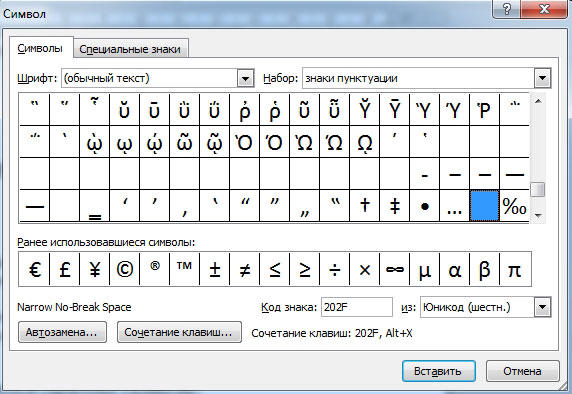
This function can be used to indicate dates - the numbers "2016" do not move away from the word "year".
How do I see where the hidden symbols are?
Formatting elements cannot be seen. They are used for layout and should not be displayed in the normal mode of working with the document. But to find the Non-breaking space symbol, you don't need to retype the entire text. You can customize the visibility of hidden symbols.
- At the top of the window, select Menu (Word 2013 calls it Home).
- Find the Show All Characters icon in the Paragraph panel. It looks like the letter "P" with a black spot at the top. The same function can be activated by simultaneously pressing Ctrl + Shift + * (asterisk).

All hidden formatting will appear. A standard space looks like black point, inseparable - like a small circle at the top of the line.
With this option, you can prevent self-hyphenation of a phrase in Word. It is not necessary to separate letter abbreviations, units of measurement, formulas, initials with a surname. If one part of such a construction is at the end of a line, and the other at the beginning of the next, the information will be poorly perceived. Therefore, you need to know how to put a non-breaking space in Word.
Instructions
If such a space needs to be inserted into a web page, then a special character ("mnemonic") of the HTML language should be used. In the source code of the page, it will look like this character set:. For example: This is & nbsr; sample & nbsr; unbreakable & nbsr; text. This fragment can be placed anywhere in the text of the page, and everywhere the browser will place these words on one line, shifting the transition to the next line either to the position before this block or after it.
This property of the non-breaking space is often used in the layout of web pages, not only to "glue" words in the text, but also as a "spacer" in tables and other block elements. For example, if no width is specified for a column in a table, then a non-breaking space (one or more) can be inserted into any of its cells, and the browser will not "flatten" this column to zero width, even if all the cells in the column are empty. In addition, using such spaces, you can change the spacing between words by inserting two or more words without using CSS (Cascading Style Sheets).
If a non-breaking space needs to be placed in a text document stored in a file with the format of any of the office applications (for example, doc or docx), then you can use the corresponding option of the Microsoft Word text editor. For example, in the version of Word 2007, to do this, go to the "Insert" tab and in the "Symbols" group of commands open the drop-down list on the "Symbol" button. Select the lowest item in it - "Other Symbols".
Go to the "Special characters" tab of the window that opens and find the line in the list that says "Non-breaking space". Then click the "Insert" button and close the window. This entire procedure can be replaced by pressing the shortcut keys CTRL + SHIFT + Spacebar assigned to it.
Auto-formatting in Microsoft Word does not always match what you are trying to write, and from time to time the program will not correct the text format correctly. For example, there are cases when it is unacceptable to break some words and phrases by automatically wrapping a part of a phrase to another line. Among them are various dates, initials, units of measurement and much more. In this case, you can defeat auto-formatting, which transfers part of an important combination of words or characters to another line, by setting a non-breaking space, which prevents line breaks and prevents unnecessary hyphenation. How to put a non-breaking space in your text?
Instructions
Open in the main menu Microsoft word section "Insert" and select insert symbols. In the window that appears, click "Other characters" and on the special characters tab, find the "Non-breaking space" in the list.
By default, non-breaking spaces are hidden characters, so look for the hidden characters icon in the menu bar to see them. They can also be displayed by opening the "Paragraph" section and clicking on the item "Show all characters".
You will see regular spaces as dots, and the non-breaking spaces you just placed as small circles. To turn off the display of spaces, click on the hidden symbols visibility icon again, and all hidden symbols will disappear. At any time, their visibility can be turned on and off.
Related Videos
Text editors allow users to save time by typing words in full and not splitting them when wrapping to the next line. It is more convenient to read the whole word, of course, but sometimes it is advisable to use the transfer of several syllables.

Instructions
If you adhere to typing specific format, for example, alignment to the left, you will inevitably face the problem of word wrapping to another line, because it is important for you not to leave a blank space that does not reach the end of the line. If this is an isolated case, you can add the hyphenation manually. Just press the "hyphen" key before the end of the line, while observing the syllabic principle of dividing words. Remember that you cannot wrap only one letter of a word on another line, or a combination of a consonant and a soft sign. Ideal for syllable is the combination of a consonant and a vowel that form a common syllable. You can transfer several syllables at once, dividing the word in half.
If when typing only speed is important to you, and you prefer to give the literacy check to the computer, use the "Automatic Transfer" service of the MC Word text document. You can set such a function in MC Word 2003 using the "Tools" menu located on the main toolbar. By clicking on the "Service" button with the left mouse button, move the cursor to the "Language" section. In the context menu that opens, select the "Hyphenation" function. Check the box "Automatic hyphenation" and confirm your actions by clicking the "OK" button. You can supplement the automatic hyphenation settings by choosing the width of the hyphenation zone and the maximum number of consecutive hyphens. Enter the required numerical values in the appropriate fields and click "OK". The saved changes will apply to all subsequent MC Word documents.
In Word or any other office application. This element, although not so often, is still used in the same word processor from Microsoft. It is about him that will be discussed in the future.
The ways
Non-breaking space in Word and not only can be set in the following ways:
- With a special key combination.
- Using a special ASCII code.
- Using the program menu.
- Using the clipboard.
By itself, this symbol is not visible in the normal dialing mode. It can be noticed only in the mode of displaying non-printable characters, which is activated by the corresponding button on the toolbar.
Keyboard shortcut
This is the easiest way to type a non-breaking space in Word. The keyboard shortcut allows in this case to easily and quickly type this character. The dialing order in this case is as follows:
- We set the insertion cursor at the place where this character is typed.
- We simultaneously hold down the function keys Ctrl and Shift and, without releasing them, press the space bar.
- After that, release all the keys at the same time and get an unbreakable space in the text.
We use ASCII codes
Any character can be entered using a special ASCII code in the input field of a word processor from Microsoft. The inseparable gap is no exception in this regard. The input algorithm in this case is as follows:
- We set the input pointer in the required place using the manipulator or the cursor keys.
- Switch to English entering text using the same manipulator on the language bar.
- Hold down the Alt function key on the left side of the keyboard.
- We sequentially type the key combination 2-4-8 (this is the ASCII code of this character).
After the performed manipulations, this symbol should appear.
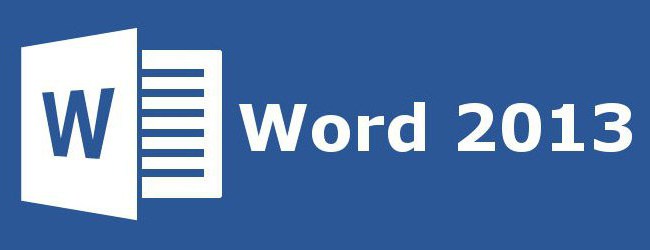
Using the menu
You can also put a non-breaking space in Word using the menu. To do this, place the cursor at the typing location. In the menu, go to the "Insert" tab for "Office 2007" and later versions of this software product, or select the "Insert" menu item for "Office 2003" and later versions of this software. Then we find the item "Symbol" and click on it with the left mouse button. In Office 2007 and later, this software the "Symbol" item is usually located on the right edge of the display. In the menu that opens, find a non-breaking space, select it and press the "Insert" button. All these manipulations are performed using the mouse or the arrow keys and tabs, which allows you to switch between different elements of the user interface.
The situation in the package "Microsoft Office 2013"
The most difficult situation with how to put a non-breaking space in Word, in latest versions of this software - "Office 2013". The familiar keyboard shortcut mentioned earlier does not function in it by default. Therefore, when you start this software for the first time, it is recommended to change its basic settings. To do this, go to the menu or the "Insert" tab and find the "Symbol" item on it. In the field "Character code" enter the combination 202F (this is the hexadecimal code of this character). After that, the system will automatically find the non-breaking space. Then we click on the "Keyboard shortcuts" button and after that, in the window that opens, set the usual keyboard shortcut for this sign. We save the changes made using the "Assign" button. In the future, in the process of entering text, if you need to type this character, you just need to simultaneously press the familiar combination of two function keys and a space - and that's it.
Another versatile way
Another way to enter a non-breaking space is to use a non-breaking space. In this case, the procedure is as follows:
- We find this symbol anywhere and select it using the mouse. For example, on the Internet at any site.
- We use the key combination Ctrl + C to add a non-breaking space character to the clipboard.
- Next, go to the application in which you need to insert this character, and set the cursor at the entry point.
- Then we press the combination Ctrl + V. After that, the copied symbol should be inserted into our document.
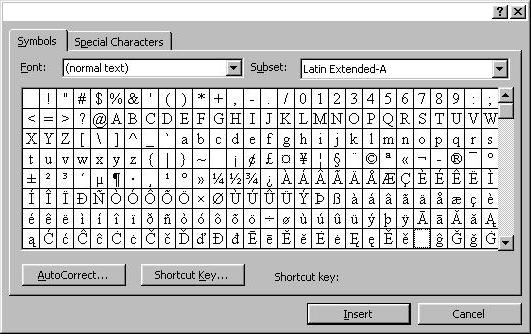
Be that as it may, and the non-breaking space in Word is easiest to insert using a special key combination. It is it that is recommended to be used in practice.


